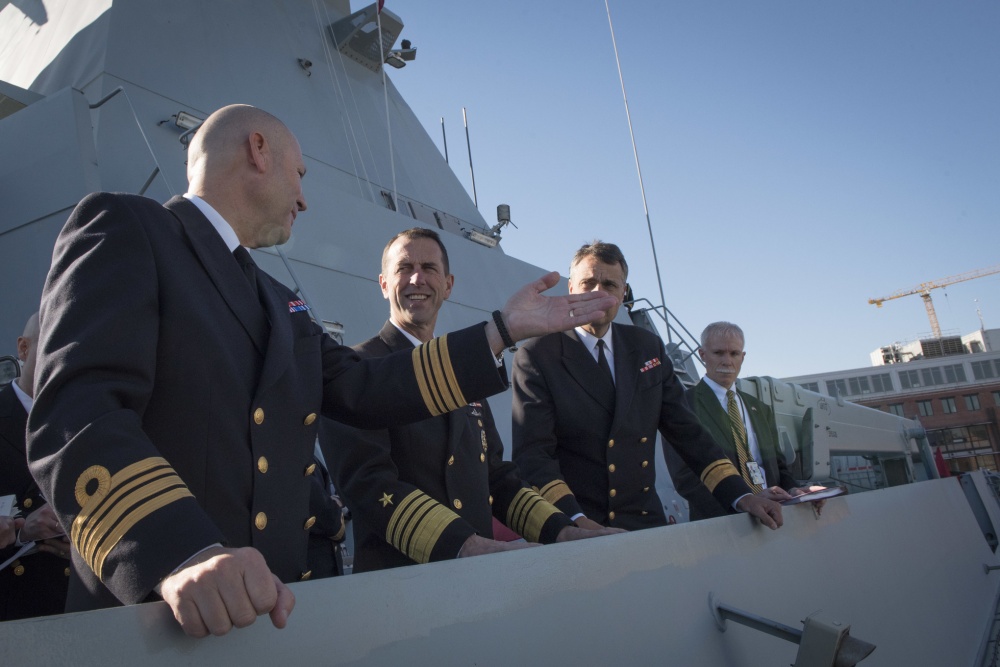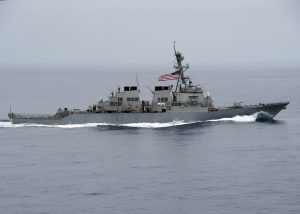CNO: New Strategy Is To ‘Force Our Competitors to Respond’
Posted on

US Chief of Naval Operations, Adm. John Richardson, visits the Danish “Stanflex” frigate Peter Willemoes.
WASHINGTON: The Navy’s top officer said yesterday’s deployment of two US destroyers through the Taiwan Strait is part of a strategy that will have US ships making the first moves “so that we can force our competitors to respond.”
Speaking about naval operations more broadly, Chief of Naval Operations, Adm. John Richardson, said at a New America Foundation event today that “in the ideal world we would want our competitors to respond to our moves instead of us responding to them… We would want to make many of the first moves on our own.”
The USS William P. Lawrence and USS Stethem transited through the 112-mile-wide Strait which separates Taiwan from China on Sunday, following a recent transit of a French warship challenging China’s claim to the waterway between the mainland and the island.

USS Stethem steams through the western Pacific Ocean.
Richardson added this isn’t only a bilateral issue between the US and China. “It’s easy to think of this as a bilateral approach…but it’s really a regional approach we have that is trying to make all of our allies and partners more resilient” through constant US operations and training events.
Running Freedom Of Navigation Operations (FONOPS) near Taiwan and tiny islands constructed by China in the South China Sea not only reminds Beijing that its claims are illegal under international law and not recognized by Washington, but, Richardson said, “it goes to this idea of response time as well, so we can respond and anticipate” actions of competitors. “The idea that our competitors are responding to [us] rather than always being in response mode ourselves.”
In a Sunday interview with the Financial Times, Richardson said he told his Chinese counterpart in January that the FONOPS will continue.
“I made it very clear that the U.S. Navy will not be coerced and will continue to conduct routine and lawful operations around the world,” Richardson said in the interview.
Speaking with reporters after today’s event, Richard told me that when it comes to the Navy’s reconstituted 2nd Fleet, which is preparing to kick off operations in the North Atlantic and Mediterranean, these ideas will continue to be fleshed out.
“We talked about war games, and that’s one area — how does this command and control all stitch together there,” he said. The 2nd Fleet will control the BALTOPS exercise in the Baltic Sea in June, transforming the decade-old drill on Russia’s doorstep into a major command and control exercise with several NATO and non-NATO allies.
“We’ve got some rough ideas or a first hypothesis, if you will,” of how command and control will work amid allies in the crowded Baltic, “but let’s go wargame it. The devil’s always in the details so we’re going to go check it out,” he said.
Subscribe to our newsletter
Promotions, new products and sales. Directly to your inbox.
